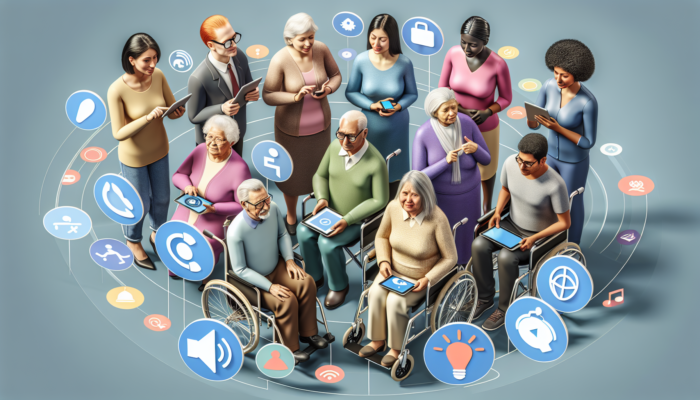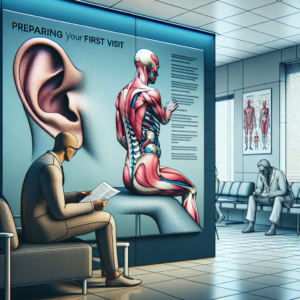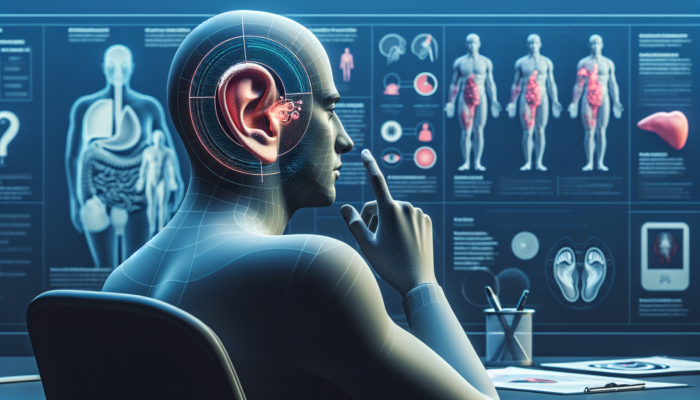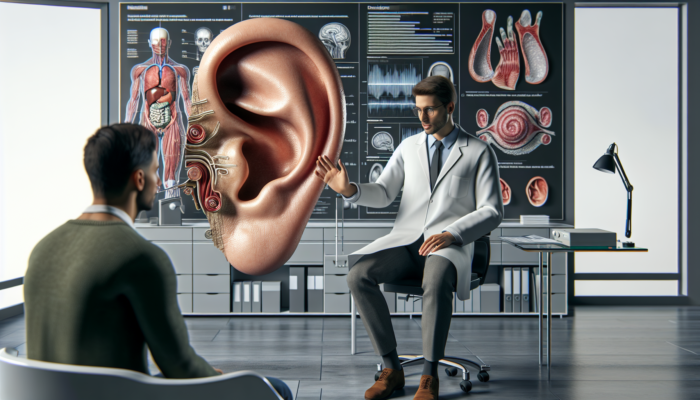Last Updated on 03/05/2025 by Admin
Comprehensive Insights into Otitis Media: Understanding the Condition
Defining Otitis Media: What You Need to Know
Otitis media is an infection or inflammation affecting the middle ear, a condition that is prevalent among both children and adults. The importance of recognizing and addressing this condition cannot be overstated, as it can lead to significant discomfort and serious complications if left untreated. The middle ear, located behind the eardrum, plays a crucial role in our ability to hear. When it becomes infected, fluid can accumulate in this area, resulting in pain and a sensation of fullness in the ear. Therefore, understanding what otitis media is and how to prevent it is essential for both parents and healthcare providers, especially considering the high incidence in young children. These youngsters are particularly vulnerable due to their developing immune systems and the shorter length of their eustachian tubes.
Otitis media can manifest in different forms, such as acute otitis media, which presents with sudden onset and evident symptoms, and otitis media with effusion, where fluid accumulates without a clear infection. Individuals suffering from this condition may experience symptoms that range from mild discomfort to severe pain and fever, often resulting in temporary hearing loss. Early recognition of these signs is crucial, as it allows for timely intervention and treatment, which can help prevent further complications.
Identifying the Symptoms of Otitis Media
The symptoms associated with otitis media can differ significantly between adults and children. Common symptoms include ear pain, which may vary from a dull ache to sharp, debilitating discomfort. In young children, articulating this pain can be challenging, often resulting in increased irritability and fussiness. Fever is another prevalent symptom that frequently accompanies ear infections, as the body’s immune response kicks into action to combat the infection.
Hearing difficulties are also a common issue, often resulting from fluid accumulation in the middle ear. This can lead to temporary hearing loss, which is particularly concerning for children as it may affect their language development. It is essential to closely monitor these symptoms; if left untreated, otitis media can lead to more severe health issues, including the spread of infection or chronic hearing impairment. Thus, understanding the full scope of what otitis media is and how to prevent it is vital to minimizing long-term consequences associated with this condition.
Identifying the Causes of Otitis Media
The primary causes of otitis media are bacterial or viral infections, often triggered by colds, allergies, or sinus infections that lead to inflammation of the eustachian tubes. These tubes connect the middle ear to the back of the throat, helping regulate pressure and facilitate fluid drainage. When these tubes become swollen or blocked, fluid accumulation occurs, creating an environment conducive to pathogen growth.
Environmental factors significantly contribute to the incidence of otitis media. Notably, exposure to secondhand smoke is a considerable risk factor, particularly for children, as it irritates the respiratory system and eustachian tubes, increasing the likelihood of infections. Additionally, allergens like dust mites and pet dander can exacerbate the situation, leading to recurrent infections. Genetic predisposition is also a factor; children with a family history of ear infections are more likely to experience similar issues, highlighting the multifaceted nature of this condition.
How Healthcare Professionals Diagnose Otitis Media
The diagnosis of otitis media typically begins with a comprehensive physical examination by a qualified healthcare professional. The primary diagnostic tool employed during this process is an otoscope, a handheld device equipped with a light and magnifying lens that enables the doctor to inspect the ear canal and assess the condition of the eardrum for signs of infection such as redness, swelling, or fluid buildup.
In some instances, further testing may be warranted to confirm the diagnosis and evaluate the state of the middle ear. Tympanometry is one such test that measures the movement of the eardrum and can indicate the presence of fluid in the middle ear. Hearing tests, such as audiometry, may also be utilized to assess any hearing loss associated with the infection. Early and accurate diagnosis is essential for effective treatment and for resolving issues related to otitis media.
Exploring Treatment Options for Otitis Media
Treatment strategies for otitis media vary based on the severity of the infection and the overall health of the patient. For bacterial infections, healthcare providers typically prescribe antibiotics to eradicate the pathogens involved. However, antibiotics may not be necessary for mild cases, particularly when a viral infection is suspected.
Pain relief constitutes another critical aspect of treatment. Over-the-counter medications such as acetaminophen or ibuprofen are often recommended to alleviate discomfort associated with ear infections. In cases that are more severe or recurrent, surgical intervention may be indicated. For instance, tympanostomy tubes may be placed to facilitate fluid drainage and prevent future infections.
Alternative therapies, while less commonly utilized, may also be considered for managing symptoms. Some individuals explore options like acupuncture or herbal remedies; however, the effectiveness of these treatments can vary widely, and it’s essential to consult with a healthcare professional before pursuing them. Furthermore, preventive measures, including appropriate vaccinations and good hygiene practices, are crucial in reducing the incidence of ear infections and the subsequent need for treatment.
Understanding the Risk Factors for Otitis Media
Why Age Matters: The Susceptibility of Young Children
Young children are particularly vulnerable to otitis media due to their developing immune systems and anatomical differences, such as shorter, more horizontally oriented eustachian tubes. These factors make it easier for pathogens to access the middle ear. Statistics reveal that by the age of three, nearly 80% of children will have experienced at least one episode of otitis media, highlighting the necessity for vigilance among parents and caregivers.
In addition to anatomical predispositions, children’s immune responses are still maturing, rendering them less capable of combating infections. Consequently, any respiratory tract infections can rapidly escalate to otitis media. Parents should remain observant of symptoms and seek medical advice promptly to prevent potential complications, particularly during periods of heightened respiratory infections, such as flu season.
As children grow, the risks of otitis media do not entirely diminish. Adolescents and adults can still experience this condition, especially if they have underlying health issues or are exposed to environmental risk factors. Understanding these age-related dynamics is essential for effectively managing and preventing occurrences of otitis media across different life stages.
Environmental Influences on Otitis Media Development
Environmental factors significantly influence the development of otitis media. One of the most prominent is exposure to secondhand smoke, which has been associated with an increased incidence of ear infections in children. Research indicates that children living in households where smoking occurs are more likely to develop respiratory infections, which can subsequently lead to middle ear infections.
Additionally, allergens in the environment can exacerbate otitis media. Common triggers, including dust mites, mold, and pet dander, can worsen respiratory conditions and lead to inflammation of the eustachian tubes, increasing the risk of infection. Parents and caregivers should implement strategies to minimize allergen exposure at home, such as regular cleaning, using air purifiers, and keeping pets out of bedrooms.
Geographical factors can also impact the prevalence of otitis media. For example, children residing in urban environments may encounter higher levels of air pollution, contributing to respiratory issues. Conversely, rural children may face increased exposure to outdoor allergens. Understanding these environmental influences can empower families to take proactive measures in managing the risk of otitis media, ultimately enhancing their overall health.
The Role of Genetic Predisposition in Otitis Media
Genetic predisposition plays a significant role in the likelihood of developing otitis media. A family history of ear infections may suggest a genetic vulnerability among family members, particularly children. Research indicates that hereditary factors can influence both the structure of the ear and immune response, rendering some individuals more susceptible to infections.
Understanding one’s family health history can be a vital tool in anticipating potential health issues, including otitis media. Families with a known history of ear infections may benefit from early interventions, such as routine check-ups with healthcare providers to monitor for signs of infection and address them promptly.
Moreover, genetic factors can interact with environmental influences to heighten the risk. For instance, a child with a family history of otitis media who is also exposed to allergens or secondhand smoke may face an increased likelihood of developing this condition. Recognizing the interplay between genetics and environment is essential for developing personalized prevention strategies and ensuring timely treatment.
The Diagnostic Process for Otitis Media
Conducting a Physical Examination for Accurate Diagnosis
Diagnosing otitis media begins with a thorough physical examination, typically performed by a healthcare professional. The primary instrument used during this examination is an otoscope, a handheld device equipped with a light and magnifying lens that enables the doctor to inspect the ear canal and evaluate the condition of the eardrum.
During this examination, the healthcare provider will look for signs of infection, including redness, swelling, or the presence of fluid behind the eardrum. This visual inspection is essential as it helps determine whether the infection is acute or has progressed to a more chronic condition. For children, who may struggle to communicate their symptoms effectively, this examination can provide critical insights into their ear health.
In some scenarios, the doctor may also check for any drainage from the ear, which can signify a more severe infection or perforation of the eardrum. Understanding the signs of otitis media through a physical examination is crucial, as early detection leads to better outcomes. It enables healthcare providers to recommend appropriate treatment and can prevent complications associated with untreated infections.
Assessing Hearing Through Comprehensive Testing
Hearing tests are essential in the thorough assessment of otitis media, particularly in determining any hearing loss resulting from the condition. Audiometry is a common method employed to measure a patient’s hearing ability, helping ascertain the extent of impact otitis media may have on auditory function.
In children, hearing loss can significantly hinder language development and communication skills. By identifying any hearing deficits early on, healthcare providers can implement strategies to address these challenges, including referrals to speech therapists or audiologists. The relationship between otitis media and hearing loss underscores the importance of regular hearing assessments, especially in high-risk populations, such as young children.
Furthermore, audiometric testing may need to be repeated over time to monitor any changes in hearing ability, particularly for those with recurrent otitis media. This ongoing evaluation is crucial in understanding the long-term implications of ear infections on auditory health and ensuring that individuals receive appropriate interventions to support their hearing and communication needs.
Utilizing Additional Testing for Comprehensive Evaluation
In certain circumstances, additional testing may be necessary to diagnose and evaluate otitis media more thoroughly. Tympanometry is a valuable diagnostic tool that measures the movement of the eardrum in response to changes in air pressure. This test helps evaluate the presence of fluid in the middle ear, a hallmark of otitis media.
In more complex cases, imaging studies such as CT scans or MRIs might be recommended, particularly when a healthcare provider suspects complications like mastoiditis or chronic otitis media. These imaging techniques offer detailed visualizations of the ear structures, allowing for a comprehensive assessment of the condition.
Understanding these diagnostic processes is essential for patients and their families, as it can help demystify the steps involved in identifying otitis media. Clear communication with healthcare providers regarding the necessity and implications of these tests can enhance the overall experience and facilitate more informed decisions regarding treatment options.
Exploring Treatment Options for Otitis Media
Medications: The First Line of Defense
The treatment of otitis media usually commences with medications tailored to the underlying cause of the infection. For bacterial infections, healthcare providers typically prescribe antibiotics to combat the pathogens responsible. It is vital for patients to complete the entire course of antibiotics, even if they start to feel better before finishing the medication. This practice helps prevent the emergence of antibiotic-resistant bacteria, a growing concern in modern medicine.
Alongside antibiotics, pain relief medications play a crucial role in managing symptoms associated with otitis media. Over-the-counter options, such as acetaminophen and ibuprofen, can alleviate ear pain and reduce fever. These medications are particularly beneficial for children, who might struggle to articulate their discomfort. Parents should consult with a healthcare provider regarding appropriate dosages based on their child’s age and weight.
While medications can be effective in treating otitis media, it is essential to recognize that not all cases necessitate antibiotic treatment. Many instances of otitis media are viral in nature, for which antibiotics are ineffective. In such cases, healthcare providers may recommend a watchful waiting approach, monitoring symptoms while managing pain through supportive care. Understanding this nuanced approach to treatment can empower patients and their families to make informed decisions about their healthcare.
Utilizing Home Remedies for Supportive Care
Home remedies can provide additional support during the treatment of otitis media, offering relief from discomfort and promoting overall ear health. One common approach involves using warm compresses applied to the affected ear. The gentle heat helps alleviate pain and promotes the drainage of accumulated fluid, enhancing comfort.
Over-the-counter ear drops may also provide relief, particularly those containing soothing ingredients designed to alleviate itching and discomfort. However, it is crucial to consult with a healthcare professional before using any product, as some drops may not be suitable for individuals with a perforated eardrum or specific ear conditions.
Moreover, maintaining hydration can assist in thinning mucus and promoting drainage from the eustachian tubes, potentially reducing the risk of further infections. Patients may also consider incorporating steam inhalation or saline nasal sprays into their routine to help ease congestion and improve overall respiratory health. While these home remedies can offer relief, they should complement—not substitute for—professional medical advice and treatment.
Considering Surgical Interventions When Necessary
In cases of severe or recurrent otitis media, surgical intervention may become necessary to provide relief and prevent future infections. One common procedure involves the insertion of tympanostomy tubes, small tubes placed in the eardrum to facilitate fluid drainage and equalize pressure in the middle ear. This procedure is typically quick and can significantly enhance the quality of life for individuals who experience frequent ear infections.
Tympanostomy tubes are particularly beneficial for children with recurrent infections, as they can reduce the incidence of ear infections and related complications. The tubes usually remain in place for several months before naturally falling out, allowing for improved ear health during this period.
In more severe cases, such as those involving persistent fluid buildup or complications like mastoiditis, more extensive surgical procedures may be warranted. Options may include mastoidectomy or tympanoplasty, depending on the specific condition and the patient’s overall health. Understanding these surgical options is crucial for families facing the challenges of recurrent otitis media, as they can provide hope for long-term relief and improved ear health.
Exploring Alternative Therapies for Relief
Alternative therapies for managing otitis media have garnered interest among patients seeking complementary approaches to traditional treatments. Acupuncture, for example, has been investigated as a potential method for alleviating ear pain and promoting overall wellness. While individual responses to acupuncture can vary, some patients report positive outcomes in pain reduction and improved comfort.
Herbal remedies also attract attention as natural solutions. Certain herbs, such as garlic and ginger, are believed to possess anti-inflammatory properties that may alleviate symptoms. However, it is essential to approach herbal treatments cautiously and consult with a healthcare provider, as interactions with conventional medications are possible.
Despite the appeal of alternative therapies, scientific evidence supporting their effectiveness for otitis media remains limited. Patients should remain open to exploring various approaches while prioritizing evidence-based treatments and seeking guidance from healthcare professionals to ensure safe and effective management of their condition.
Implementing Preventive Measures for Better Ear Health
Preventive measures are crucial in reducing the risk of otitis media and its recurrence. Vaccinations play a vital role in this prevention strategy, with routine immunizations against pneumococcal infections and influenza recommended for children. These vaccines can significantly decrease the likelihood of infections that might lead to otitis media.
Good hygiene practices are also essential for preventing the transmission of infections. Simple measures, such as regular hand-washing and avoiding close contact with sick individuals, can help reduce the spread of respiratory pathogens. Parents should encourage children to adopt these habits to protect their health and minimize the risk of ear infections.
Breastfeeding is another effective preventive strategy, particularly for infants. Breast milk contains antibodies that can strengthen a child’s immune system, helping to ward off infections, including otitis media. The World Health Organization recommends exclusive breastfeeding for the first six months of life to maximize health benefits.
By adopting these preventive measures, families can significantly reduce the incidence of otitis media, paving the way for healthier ears and enhanced overall well-being.
Understanding the Impact of Otitis Media on Hearing and Development
Recognizing Hearing Loss Associated with Otitis Media
Untreated otitis media can result in significant hearing loss, both temporary and permanent, which may adversely affect a child’s communication skills and social interactions. The accumulation of fluid in the middle ear interferes with the normal functioning of the eardrum and ossicles, which are essential for sound transmission.
For children, even a brief episode of hearing loss can disrupt crucial language acquisition and development. Research indicates that children with recurrent ear infections are at a heightened risk of developing hearing impairments. This underscores the importance of early diagnosis and intervention to prevent long-term repercussions on auditory health.
Parents and caregivers should remain vigilant in monitoring their children’s hearing and speech development, seeking professional evaluation if they observe any signs of hearing difficulties. Early detection and effective management of otitis media can help mitigate the risk of lasting impacts on hearing, ensuring children receive the support they need for optimal development.
Addressing Speech Delays Linked to Otitis Media
Speech delays are common among children suffering from recurrent otitis media, as the condition can interfere with the auditory input necessary for language development. Children rely heavily on hearing to learn how to speak, and persistent ear infections can disrupt this critical process.
Research has shown a clear correlation between frequent ear infections and delays in speech and language skills. These delays can manifest in various forms, including difficulties in articulation, vocabulary acquisition, and overall communication effectiveness. In some instances, children may struggle to follow directions or engage in meaningful conversations, leading to frustration and social challenges.
To combat these potential delays, early intervention is key. Speech therapy can be invaluable for children affected by hearing loss due to otitis media, providing targeted support to enhance their language skills. Parents should collaborate closely with healthcare providers to monitor their child’s development and seek appropriate resources to support their communication needs.
Navigating Educational Challenges Stemming from Hearing Issues
Persistent hearing difficulties resulting from otitis media can pose significant educational challenges for affected children. Hearing impairments can hinder a child’s ability to participate in classroom discussions, follow lessons, and engage with peers, ultimately impacting their academic performance.
Research indicates that children with frequent ear infections are at a higher risk of experiencing academic struggles, especially in subjects that require strong verbal communication skills. These challenges can lead to frustration and diminished self-esteem, creating a cycle that may further obstruct learning.
To address these educational hurdles, parents and educators must collaborate to implement strategies that support affected children. This may include providing additional resources, such as individualized education plans (IEPs) or accommodations within the classroom to enhance learning experiences. Early recognition of hearing issues and proactive intervention can significantly improve educational outcomes for children living with the effects of otitis media.
Strategies for Managing Recurrent Otitis Media
Monitoring Ear Health for Timely Intervention
Managing recurrent otitis media necessitates a proactive approach, beginning with regular monitoring by healthcare providers. Families should establish a routine of check-ups to assess ear health, particularly for children with a history of frequent infections. These appointments allow healthcare professionals to evaluate any changes in the middle ear and recommend appropriate interventions.
Parents should also be attentive in observing their children for recurring symptoms, such as ear pain, fever, or irritability. Keeping a journal of these occurrences can provide valuable information to healthcare providers, enabling them to identify patterns and potential triggers contributing to recurrent infections.
In addition to regular visits, families should stay informed about the latest research and recommendations regarding otitis media management. Engaging with healthcare providers can facilitate timely identification and treatment of ear infections, ultimately reducing their frequency and improving overall ear health.
Making Lifestyle Adjustments for Better Ear Health
Lifestyle adjustments can significantly influence the management of recurrent otitis media and help reduce the frequency of infections. Families should consider minimizing exposure to known allergens, such as dust mites, pollen, and pet dander, which can exacerbate respiratory issues and lead to inflammation of the eustachian tubes.
Maintaining a healthy environment is also essential. This includes ensuring that living spaces are well-ventilated and free from tobacco smoke, as secondhand smoke is a notable risk factor for otitis media. Additionally, encouraging a nutritious diet rich in fruits, vegetables, and whole grains can bolster the immune system, further decreasing the risk of infections.
Regular physical activity is another important component of overall health that can contribute to preventing infections. Engaging in outdoor activities, especially during warmer months, enhances respiratory health and promotes well-being. By incorporating these lifestyle adjustments, families can take proactive steps in managing otitis media and fostering better ear health.
Consulting Specialists for Advanced Management
For individuals experiencing recurrent otitis media, consulting specialists can provide valuable insights and advanced management options. Ear, nose, and throat (ENT) specialists are equipped to assess and treat complex cases of otitis media, offering targeted interventions tailored to individual needs.
ENT specialists may recommend various treatment options, including further diagnostic testing, surgical procedures, or advanced therapies designed to address underlying issues contributing to recurrent infections. Collaborating with specialists ensures that patients receive comprehensive care and access to the latest advancements in otitis media management.
In addition to medical interventions, specialists can offer valuable education and resources to empower families in managing ear health. This collaborative approach fosters a supportive environment for individuals navigating the challenges of recurrent otitis media, enhancing their overall quality of life.
Prioritizing Vaccinations to Prevent Infections
Ensuring up-to-date vaccinations is an essential strategy for preventing infections that may lead to recurrent otitis media. Vaccines such as the pneumococcal vaccine and the influenza vaccine can significantly reduce the risk of respiratory infections, which are common precursors to otitis media.
Parents should consult with healthcare providers to establish a vaccination schedule that aligns with recommended guidelines. Timely vaccinations not only protect individual health but also contribute to community immunity, further reducing the spread of infections that can lead to ear issues.
By prioritizing vaccinations, families can take proactive measures to safeguard their health and minimize the risk of recurrent otitis media. This preventive approach supports overall well-being and fosters healthier ears, enhancing life quality for individuals and families alike.
Frequently Asked Questions about Otitis Media
What is otitis media?
Otitis media refers to an infection or inflammation of the middle ear, commonly resulting in ear pain, fever, and hearing difficulties.
What are the main symptoms of otitis media?
Typical symptoms include ear pain, fever, irritability in children, and hearing difficulties due to fluid buildup in the middle ear.
What causes otitis media?
Otitis media is primarily caused by bacterial or viral infections, often following respiratory illnesses. Environmental factors such as secondhand smoke can also contribute to its development.
How is otitis media diagnosed?
Diagnosis usually involves a physical examination using an otoscope to inspect the ear. Additional tests like hearing assessments and tympanometry may be conducted for further evaluation.
What treatment options are available for otitis media?
Treatment options include prescribing antibiotics for bacterial infections, pain relief medications, and in severe cases, surgical options like tympanostomy tube insertion.
Can otitis media lead to hearing loss?
Yes, if left untreated, otitis media can result in temporary or permanent hearing loss, which negatively impacts communication and language development, particularly in children.
How can I prevent otitis media?
Preventive strategies include vaccinations, practicing good hygiene, and breastfeeding infants to enhance their immune systems against infections.
What are the risk factors for otitis media?
Key risk factors include age (young children), exposure to allergens, and environmental factors such as smoke, along with a family history of ear infections.
When should I seek medical attention for my child’s ear pain?
Seek medical attention if your child experiences severe ear pain, fever, irritability, or symptoms persisting longer than a couple of days.
Are there alternative therapies for otitis media?
Some individuals explore alternative therapies like acupuncture or herbal remedies, but consulting healthcare professionals before trying these approaches is essential.
Explore our world on X!
The post Otitis Media: Understanding and Preventing Ear Infections appeared first on The Microsuction Ear Wax Removal Network.



















